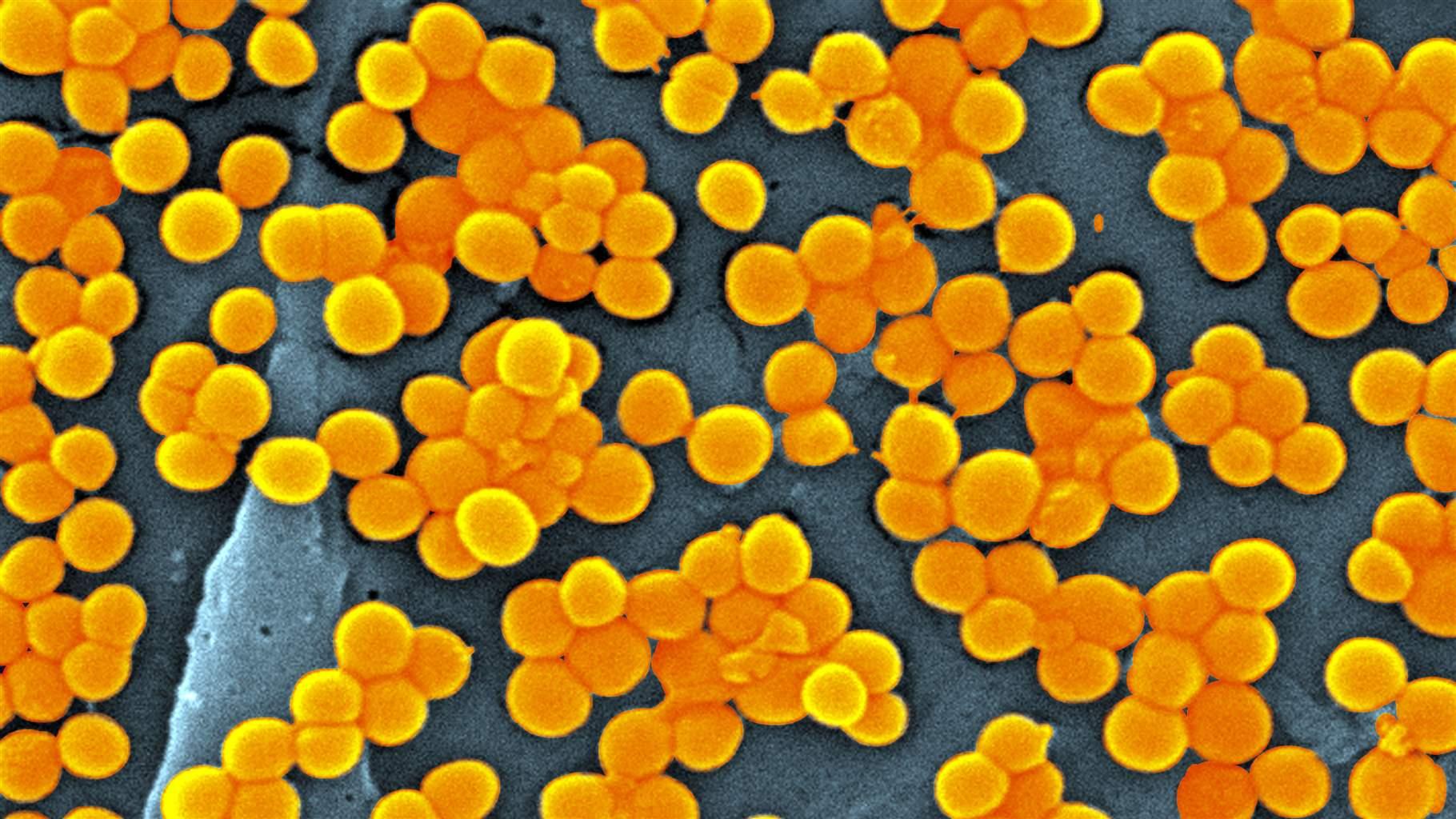International Efforts Critical to Global Fight Against Superbugs
Pan-American health agency reaffirms commitment to combating antibiotic-resistant bacteria

Antimicrobial-resistant bacteria are one of the greatest global health challenges of our time. These increasingly resistant superbugs do not respect borders and combating this threat requires actions by a wide range of stakeholders, including nongovernmental organizations, private industry, and individual governments. The Pan American Health Organization (PAHO)— the regional office for the Americas of the World Health Organization—works throughout the Americas to improve and protect people’s health and has made the fight against antimicrobial resistance (AMR) a priority since 1996.
Pilar Ramon-Pardo, M.D., Ph.D., directs PAHO’s efforts to combat AMR. In advance of the recent G-20 summit in Buenos Aires, Argentina, health ministers recalled and renewed their commitments to combating AMR, and Ramon-Pardo addressed questions from The Pew Charitable Trusts about the threat posed by AMR and PAHO’s work to fight superbugs.
Q: What is PAHO’s role in the fight against superbugs?
A: Under the leadership of its 52-member countries and territories, PAHO sets regional health priorities and mobilizes action to address health problems like AMR. In 2015 we established an action plan for the Americas on AMR, aligned with WHO’s Global Action Plan, that was endorsed by all member countries. The plan focuses on addressing resistant bacteria that WHO deems “priority pathogens” through five strategic actions: (1) raising awareness and improving the understanding of AMR; (2) strengthening knowledge through surveillance and research; (3) improving infection prevention and control (IPC) capacity; (4) optimizing antibiotic use; and (5) developing the economic case for sustainable investment that considers the needs of all countries, and increases investment in new medicines, diagnostic tools, vaccines, and other interventions. As a result, all PAHO countries have committed to developing and implementing their respective national action plans on AMR and are advancing policies, measures, and interventions to ensure their effective design and implementation.
PAHO promotes cooperation between countries to help ensure successes and provides logistic and technical support for a variety of efforts throughout the region. These include: public awareness campaigns, infection prevention and control (IPC) programs, and capacity building to help strengthen surveillance systems and increase laboratories’ abilities to accurately identify drug-resistant pathogens and their antimicrobial susceptibility. As part of this support, PAHO has developed technical tools that assist health care facilities with data entry, storage, and analysis; conducted multi-country surveys to assess antibiotic usage and prescribing practices; and helped member countries apply WHO’s evidence-based guidance on the core components of IPC programs.
Q: How is antibiotic stewardship improving in Latin America and the Caribbean (LAC)?
A: In the LAC region, most antimicrobial stewardship interventions have focused on acute care facilities, largely led by regional champions and coordinated by PAHO and other health societies. As a result, Open Forum Infectious Diseases reports a wide variation in the implementation of interventions that support optimal antibiotic use. To help expand stewardship efforts across all settings in which antibiotics are used, and foster collaborative efforts to drive progress, PAHO has:
- Worked with experts from the LAC and Florida International University to develop a regional reference guide for antimicrobial stewardship at the national level and for hospitals.
- Partnered with the U.S. Centers for Disease Control and Prevention and The Pew Charitable Trusts to convene a meeting of experts in Peru in the fall of 2017, during which selected LAC countries discussed ways that data on antibiotic resistance and antibiotic use can be leveraged to engage regional leaders on the issue and spur antibiotic stewardship at the national level. The meeting resulted in a commitment from countries to improve the quality of their data on AMR and antibiotic use—particularly information that can highlight both the human and financial costs of resistant infections—and to use that data to motivate and sustain political action in support of the implementation of antibiotic stewardship.
- Conducted and shared research showing which antibiotics are most commonly prescribed in LAC countries, including the type, dose, frequency, route of administration and whether they are used mostly for treatment or prophylaxis. We hope the results will serve as a baseline to raise awareness among decision-makers, and inform and facilitate the development of tailored stewardship program interventions.
- Organized technical visits and workshops to train health professionals from different sectors on the core components of antimicrobial stewardship programs, highlighting some of the evidence-based interventions that can be adapted to the LAC context.
Q: What progress have LAC countries made in combating antibiotic-resistant bacteria since the UN’s 2016 General Assembly meeting on this issue?
A: At this UN meeting, heads of state—including those from PAHO countries—demonstrated a clear political commitment to tackling AMR, and confirmed their support for multisectoral collaboration. Since then, a growing number of the region’s countries have been developing and starting to implement AMR national action plans, participating in regional and global standardized AMR surveillance systems such as Latin America’s ReLAVRA network and the WHO Global Antimicrobial Resistance Surveillance System, and are strengthening multisectoral approaches to combating AMR, including participation from the agriculture, animal health, food production, and environment sectors.
Q: Can you explore some of the unique challenges to slowing the emergence of antibiotic-resistant bacteria in LAC countries?
A: In terms of appropriate antibiotics use in the LAC region a number of challenges exist. One is the antibiotic prescription culture of health care providers, which favors the overuse of antibiotics and allows for self-prescription over the counter. Sales of counterfeited antibiotics are an issue as well. While these challenges are not unique to the region, the regional context must be factored in as we customize our approaches to addressing health care structures and resources. PAHO is following a stepwise approach in line with One Health to support countries in the region in the design and implementation of evidence-based AMR prevention and control measures, using the Global (and Regional) AMR Action Plans as a framework. PAHO is also working with countries to ensure policy development that is sensitive to barriers specific to individual places.
Q: What gives you hope and inspires you and your PAHO colleagues to keep up the fight as new superbugs continue to emerge?
A: We remain hopeful and inspired every day in the fight against emerging new superbugs for many reasons. With every step we have collaboratively taken with the member countries to fight AMR, we have seen some positive changes in the region. Through dedication and commitment from the region’s countries, to date one-third have developed national action plans that reflect the global action plan’s objectives, and others continue working with us to create and refine their plans. Moreover, through the continuous technical supports we have been providing, countries have built a sustainable capacity to prevent, prepare for, and respond to emerging superbugs. As we continue to facilitate communication and raise awareness on critical AMR issues among the region’s policymakers and relevant stakeholders, additional collaborative efforts will be established.
Antimicrobial resistance cannot be addressed by a single unit or country. Multisectoral work is crucial. We believe that by using a “One Health” approach and working together—continuing to make joint efforts in designing and implementing programs, policies, legislation, and research—we can combat AMR.












